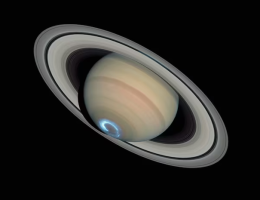Saturn's rings set to 'disappear' briefly in March 2025: Explained
Saturn's rings set to 'disappear' briefly in March 2025: Explained
The majestic rings of planet Saturn, which span about 2.82 lakh kilometres in width, are set to disappear for a brief period in 2025, Nasa confirmed to CBS news.
This event, expected to occur in March, is caused by the alignment of Saturn’s rings with Earth’s line of sight. Saturn, tilted at an angle of 26.73 degrees, takes about 29.4 Earth-years to complete one orbit around the Sun. As Saturn moves along its orbit, the orientation of its rings changes relative to Earth. Scientists explain that every 13 to 15 years, the rings align edge-on from our perspective, making them appear almost invisible. This rare phenomenon last occurred in 2009.
Despite their impressive width, Saturn’s rings are incredibly thin, ranging from just 10 to 30 metres in most areas. This extreme thinness will contribute to their temporary invisibility. As Saturn progresses along its orbit, the rings will gradually reappear.
How many rings are there on Saturn?
Nasa explains that Saturn’s ring system has an intricate structure, which if laid out edge-to-edge, would stretch across the distance between Earth and the Moon. There are seven primary rings of Saturn, labelled according to their discovery: D, C, B, A, F, G, and E, extending outward from the planet.
The main rings are A, B and C, with A being the outermost ring, easily seen with Earth-based telescopes. Interestingly, each ring orbits at a different speed around the planet
In a 2018 paper, NASA explained that Saturn’s rings will eventually face extinction, though this process will unfold over a huge period of time. According to the space agency, Saturn’s rings are being pulled into the planet due to the force of gravity. The event occurs in the form of a dusty rain of ice particles under the influence of Saturn’s magnetic field. Due to this, scientists expect the entire ring system to vanish in 300 million years. A gaseous planet, Saturn is mostly a ball of hydrogen and helium.








.png)

